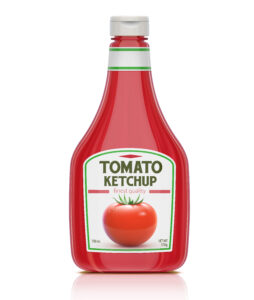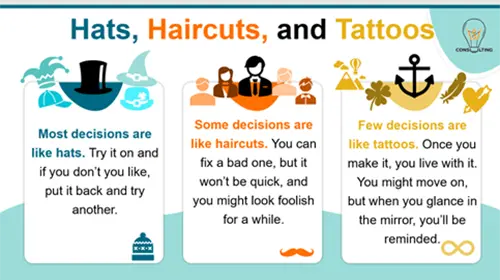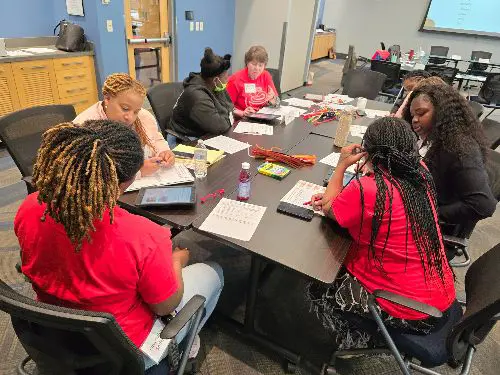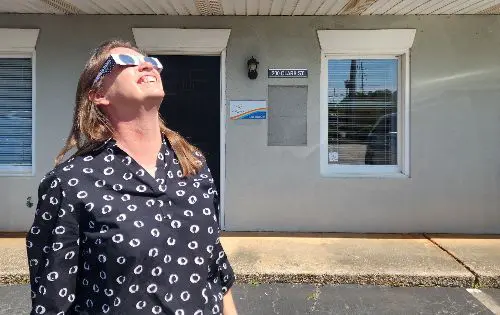
As you know, I LOVE the Olympics. The pageantry, the competition, the reward for years of tireless practice and labor…the ups and the downs. What the athletes in these various events accomplish is truly awe-inspiring.
We hear constantly about the dedication and hours…even years…of practice it takes to get to this level of perfection in a sport. The sacrifices made, the injuries pushed through, and the disappointments suffered are all a well-known part of the process. We recognize and even celebrate those as part of the medal-winning formula. But never forget that success for one person is often built on the foundation of many helping hands.
What about all these behind-the-scenes heroes? The parents who drove those athletes to 5:00 am practice sessions in the dead of winter. The siblings attending untold numbers of competitions to cheer on that brother or sister who otherwise drove them bonkers. The unnamed coaches who caught sight of – and nurtured – a glimmer of talent in a squirrely-headed eight-year-old. The high school, college and professional coaches combining to hone raw talent into world-class skills. And even the parents or coaches or friends who were honest enough to say “You lost because that just wasn’t your best effort. You haven’t been concentrating or working hard enough. How badly do you want it??” True success is built on more than mere boosterism. It always includes a hefty dose of brutal honesty and accountability.
There are stand-out stars in your organization, I’m certain. But there are also far more behind-the-scenes heroes. Make sure that you look for and recognize them. No trophies or medals needed. A simple “Thank you…I needed to hear that (or be held accountable)” is enough.
Stay Sharp,

Holly Hayes, President & Founder
ISI Consulting

GEPO – “Good Enough, Press On”. I heard this saying for the first and only time in Banf, Canada while at a collective impact conference (in 2015, I believe) and it’s stuck with me ever since. Groups are forever overthinking, creating bottlenecks that are not useful or necessary, and getting stuck. They forget that sometimes a plan is good enough and it’s time to press on to implementation.
So, since I live in South Carolina and need to add a little Southern charm to the mix, I’d like to make a little change to this acronym. Organizations, your “idea/concept/plan” is Good Enough, Please…Press On! (GEPPO). There is always more information you can collect, more data to analyze, one more survey to send out…one can always dig, and dig, and keep digging. However, the very information you need is right at your fingertips, if you will only recognize that fact. It’s real time data from your customers, from your clients, patients, board members, team members. Success will only happen when you stop analyzing the data or information and start implementing. Your plan is good enough, so please, press on!
When you start implementing (on a small scale, because we are all about quality improvement), what happens will not be perfect. And that’s OK. You are going to get great info and then make changes, tweaks, and enhancements and watch to see what happens. And then do it all over again. That’s the whole point of continuous quality improvement. Your idea is GEPPO, so keep moving! None of the articles, artificial intelligence robots, or pivot tables are going to tell you this. You are going to know this because you’re savvy enough to aim for good enough and not the ever-elusive perfection.
Stay Sharp

Holly Hayes, President & Founder
ISI Consulting

In the summer, I think there’s nothing like a good hot dog with chili, coleslaw, and some shredded cheese. In addition to tasting fabulous, sometimes a good chili dog teaches you a lesson (other than don’t wear a white shirt while eating it!). Just this past week, I was making our homemade hot dog chili, and an incredible revelation hit me. You see, I had all of the ingredients – lean ground beef, yellow onion, garlic, chili powder, mustard, etc. – but I could not make the chili. There was no ketchup to be found anywhere in our kitchen. No Heinz. No Hunts. No house brand even. Nada. No ketchup, no chili. It only takes a cup and a half for my recipe, but it’s an essential ingredient with no substitute. And then it hit me….what I was staring at looks like a lot of organizational teams. They have the people, the plans, and even their “special differentiating factors” but they are missing the one crucial ingredient needed to make things work. They’re a chili recipe with no ketchup.
As I see it, the ketchup for groups is protected time to implement plans and new changes. You see, without the ketchup (and you really don’t need that much) you do not have hot dog chili. Groups need protected time – time when they don’t have a meeting, a phone call, a looming deadline, or whatever, to actually implement the work that has been decided. It doesn’t take a lot – I think for most groups if you just gave folks a day and a half of protected time to process the proposed changes, discuss new goals and objectives, call some key individuals to figure out what is needed, or update key documents with new work flows, you would get to effective implementation a lot quicker. If you don’t, your organizational team is likely to wander around without really accomplishing what you all hoped for.
So, this summer, I encourage you to make some hot dog chili with your team (for real and metaphorically). Dust off the plans and give folks protected time and space to move some ideas closer to the finish line. I promise you’ll enjoy the results.
Stay Sharp,

Holly Hayes, President & Founder
ISI Consulting

If anyone knows me or ISI Consulting, you know we take great pride in never (or almost never) doing the same thing with a group or organization. I don’t ever want to be considered a “one-trick pony” facilitator. That’s just unfair for everyone. It’s painful for a group who experienced that same activity a year ago to be forced to do it all again. And it would be just plain boring for me.
However, I have found myself using the same open-ended question for lots of groups lately and I’m not tired of it yet. And the groups I’ve used it with have found this question extremely helpful. So, what is it? “What conversation, if begun today, could ripple out and create new possibilities for the future of ___________?” That blank could be women leaders in higher education, philanthropic funders, dental hygienists…whatever! You fill in the blank, and then just let folks go. I promise you will be amazed and encouraged by what comes out of your group. The wisdom it needs is already present and accessible. What are you hearing? What contributions are emerging? What ideas are beginning to connect? What new possibilities are you noticing?
I encourage you to use the Ripple Question at your next team meeting, staff retreat, board meeting or even with your small group of confidants. This question alone can fill 30 minutes, or even an hour, of time with worthwhile discussion. To start, I like to have small groups (no more than 7 participants) wrestle with the question. Then I move to a medium-sized group (about 14 participants), before bringing all the themes together with the entire group. This ensures everyone’s voice is heard and helps keep the groups focused.
You don’t need to hire a consultant to help you start thinking strategically as a team. You simply need to carve out time and space for reflection. Then use the open-ended Ripple Question for your team to engage in, ponder over, and explore. But, hey…if you do need a consultant to help get your team back on track or moving forward to the next level, I can help with that, too. Give me a call today, and let’s make a plan.
Stay Sharp,

Holly Hayes, President & Founder
ISI Consulting
The amazing writer James Clear, author of the book Atomic Habits, has developed a decision-making tool that I think is freaking genius. He divides all decisions into one of three categories – HATS, HAIRCUTS, or TATTOOS. (See the graphic below.)

Hats are low-risk, low investment decisions, like what t-shirt to wear to a meeting. If they don’t work out, there’s little cost to making a change (or damage done). Haircuts require a little more investment, but not that much. For example, if you paint your office that beautiful aqua you once loved but now hate, changing it takes some money and sweat equity, but it won’t break the bank. There are a few decisions, though, that are like tattoos. Once you make them, you have to live with them.
Most of the decisions we make on a daily or even monthly basis are simply a hat or haircut. If they don’t work out, it’s not that big a deal. We can simply change the hat or wait six to eight weeks for our bad bang decision to grow out.
Hat decisions sometimes need to involve a couple of other people, or even your whole team, but often they can be made on your own. One of my hat decisions went wrong this week. I invited too many people to a key meeting, and it turned out to be a “hot mess express.” So what? There will be other meetings, and I can make changes. I will choose a different hat next time and move on.
And what about those haircut decisions? They can be things like hiring a new employee or converting the office to a new project management software. If it doesn’t work out, it will take time for you and your team to recover, reassess, and move on to the next best decision (bangs, bobs, or extensions – who knows?). But here’s the thing…I very often see groups get stuck on haircut decisions. They discuss, discuss, and discuss some more when what they really need to do is ACT. Better to take a risk and try something than to have the same horrible haircut you’ve had since the ‘90’s.
Finally, those tattoo decisions…the big, hairy, scary ones. The ones that are incredibly hard to change. The ones with truly lasting impacts on you and your organization. Decisions like, should we merge with this other nonprofit, or not? Should we expand into a new state (or states), or stay where we are? Is it time to expand our mission and take on a new role? As Clear emphasizes, “When you’re dealing with an irreversible choice, move slowly and think carefully.” For these types of decisions, we need to seek wise counsel and really consider all of the consequences before getting the ink and needle out. I don’t have a single tattoo (and don’t plan to add one), but I know from going to water parks that a lot of folks have not just one, but several. I sometimes wonder if they regret any of those permanent additions to their body’s landscape. If they do, getting rid of it will be costly and painful. Be patient and keep that tattoo item on your agenda as long as you need to until you and your team have all the input you need to make the best decision possible.
In conclusion, I want you to revisit your last board meeting or team agenda. Think about what items are hat, haircut, or tattoo decisions. Let’s take the hat decisions off the agenda for you to figure out by yourself or after talking one-on-one with a colleague. Keep it simple. Let’s act and get clippin’ on those haircut decisions and remember that they’re not forever. Finally, let’s slow our roll on tattoo decisions. They’re permanent and deserve our time, attention, and deliberation. That’s easiest when we’re not bogged down with hats and haircuts.
Stay Sharp,

Holly Hayes, President & Founder
ISI Consulting

“You are most powerfully positioned to serve the person you once were.”
Rory Vaden, NY Times bestselling author, entrepreneur, podcaster, coach and speaker.
This past week I was in Baltimore, and I saw a beautiful thing happen…I saw this very quote lived out. I facilitated a small group discussion with community members, Community Health Workers and a few public health folks who were defining key messages needed for a specific population. Once I opened up with questions, the feedback poured in – not just with words, but with confidence and conviction. The community members knew what was needed, because once they were in the same position as the moms and families they’re now trying to help. They didn’t need a textbook, a podcast or a 50 PowerPoint slides to tell them. They knew what was needed – and what was not needed – and in what order things need to happen. They were perfectly positioned to serve the person they once were.
The community members and Community Health Workers around the table knew what it was like to not have dental insurance, to be unable to find a dental home, and to be treated unkindly by providers. They know what it takes to move from being the victim of a system to becoming an advocate for their own health and that of their children. The most effective way to get anything accomplished is for those closest to the issue to create solutions and find pathways that will work. They were doing just that.
Where are YOU most powerfully positioned to serve the person you once were?
Is it in a board room? Is it at a soccer field? Is it in a leadership role? Find it, and you’ll find the place you can serve with success and passion. Sadly, too many board rooms and conference tables are missing individuals with lived experience. It’s time not just to ask those folks to serve, but to wholeheartedly welcome them, listen to them, and even to let them lead the way. After all, they’ve walked this road before. (And please, whatever you do, pay them… life is hard enough already.)
Stay Sharp,

Holly Hayes, President & Founder
ISI Consulting

The eclipse this week had all us looking up…and out. Instead of staring at a screen, most of us spent at least part of the afternoon sky gazing as the moon passed between Earth and the sun, creating a view that won’t be seen for another twenty years. We forget that our blue planet, as huge as it may seem to us, is part of a much larger system. It’s a micro view versus a macro view.
Too often at work (and in life, if we’re honest), we get stuck in that micro view, particularly if we’re tackling a problem. We focus on all the little issues, small changes, immediate challenges. The things that are jumping up and down right in front of us. We look at everything through a microscope. And then we rush to make a quick adjustment or decision. Which often doesn’t work out all that well.
Maybe it’s time to get out the telescope and zoom out. Way out. Systems-thinking out. If there’s a problem, don’t think about the problem itself…think about the system surrounding it. If you have a production challenge, it’s easy to look immediately at your workers or equipment. Something must be fixed now. But what if you examine the entire system and realize that your process puts one step in the wrong place? As a result, workers are backtracking or duplicating actions. Simply trying to work faster isn’t the solution. Taking a macro view – zooming out – will show that the system needs rearranging. Change those steps and the process will move more smoothly, and faster.
I want to challenge you to take one challenge you have at work this week and apply a systems lens to it. Zoom out from the immediate squeaky wheel and see if there’s not a better solution to be found when you look at things from a distance. Think of it as eclipse-watching.
Stay Sharp,

Holly Hayes, President & Founder
ISI Consulting

If you’ve known me for long, you know I LOVE Dolly Parton. Her music. Her rags-to-riches success. Her grit and determination. Her humor. Her business sense. Her ability to stay relevant without losing her soul. Her philanthropy. And besides all that, there’s…Dollywood!
Needless to say, I truly enjoyed reading “What Would Dolly Do? How to Be a Diamond in the Rhinestone World” by Lauren Marino. It contains insightful life lessons for us all and some particularly important thoughts on how to navigate the business world. Unfortunately, it does not include a recipe for the ooey, gooey cinnamon bread that’s such a must-have at Dollywood.
All kidding aside, Dolly is known far and wide for her incredible work ethic and her insatiable desire to learn and grow. Her professional portfolio (singer, songwriter, actress, producer, promoter, entrepreneur, businesswoman, philanthropist) is so unusually wide because she has never stopped learning and doing new things. She knows that work is really all about carrying through on small commitments day after day, after day. Showing up. Being prepared. Being open-minded and willing to learn.
No matter what our field of expertise is, I think we should all take to heart what Dolly has to say about learning. She knows it’s important to know what you don’t know and to either educate yourself or partner with people who fill in your knowledge gaps. “Learning is all about doing your homework and then taking a chance. The homework part is critical. That means reading (and understanding) feasibility studies, research, and hard planning to make sure your ideas make sense. Sometimes it means listening to other experts. It is this studying and thinking through ideas that make projects a true success.” And you thought she just knew how to write country songs.
Dolly has never stopped. She’s never stopped caring, learning, evolving, being creative, or doing the hard work. Have you stopped? Are you doing your homework? Are you carrying through on your commitments, no matter how small they appear? Are you reading, studying, and learning something new every day or week? Take a tune from Dolly and keep on keeping on. It’s a recipe for success.
Want to read more? Pick up a copy of
“How to Be a Diamond in the Rhinestone World” By Lauren Marino
Stay Sharp,

Holly Hayes, President & Founder
ISI Consulting
PS – Sign up now for our May 6th – 10th on-line facilitation training via Zoom.

Jeff Bezos always uses a technique called BLOT (Bottom Line on Top) in his emails and presentations and teaches it to everyone at Amazon. Why? Because it works.
So, what is BLOT? Two simple steps.
Most people bury the most important information at the end of an email or presentation behind a ton of less useful background stuff…where it promptly gets lost. Come on, be honest! Admit that you seldom read an email carefully all the way to the end. You take in the first couple of sentences and then skim. Presentations are usually even worse. First five slides are engaging. But by the end of a long one, you’re thinking about dinner and trying to remember what’s on your Netflix watch list.
So put the best stuff front and center. Right there where your audience can’t miss it. You can fill in all the details later. This is similar to the old journalism technique of putting the “5 W’s” (Who, What, When, Where, and Why) right there in the first paragraph. That technique, for example, ensured you knew that “Three armed men escaped with $75,000 from the Main Street branch of First National Bank on Tuesday.” Details to follow. You had what you needed for now.
Or think about your last airline ticket. It told you critical information…airline, flight number, departure time, destination and arrival time, terminal and gate number. Maybe your seat number. Enough info to get you to the airline check-in desk with a minimum of confusion. From then on, those big electronic boards post all the information that’s subject to change. You have what you need.
I challenge you to give BLOT a try for the next two weeks. See if you don’t get better responses to your emails and better engagement when you give a presentation. After all, it works for Amazon.
Stay Sharp,

Holly Hayes, President & Founder
ISI Consulting
PS – Sign up now for our May 6th – 10th on-line facilitation training via Zoom.

Lessons from Fighter Pilot Training
If the past three years have taught us anything, it’s to recognize our need to adapt to changes in the world around us and the incredible power of learning on our ability to accomplish this. I gained some great insights into this from a fascinating book detailing how US fighter pilots are trained (see below for all the book info). Commercial pilots use many of these same training skills. Since I fly a fair amount for business, it’s comforting to know that despite nearly 100,000 commercial flights taking off each day, US airlines haven’t had a single crash in more than a decade. How do they accomplish that? While pilots are certainly well-trained, a good pilot uses superior judgment to avoid situations that require the use of superior skill. Pilots think smart.
Thinking smart has a lot to do with learning. Learning is about being able to forecast the future. It’s about understanding the cause-and-effect relationship of the world around us, and using that knowledge to assess situations, choose an appropriate solution, and then execute a plan that gives us a high probability of accomplishing our objectives. Successful learning is about far more than knowing mere facts. It’s about the ability to think clearly, even when the situation changes. It’s about understanding concepts – a deep knowledge of how different systems interact and how that pertains to the decisions we need to make – more than information. While numbers and terminology are quick to change, concepts typically evolve slowly, often through trial-and-error. Facts are fixed. Concepts are flexible.
Dynamic and flexible thinkers build a robust mental framework by taking general concepts and reinforcing them with real-life learned lessons. For example, take the general principle that life works better if you have more money coming into your checking account each month than what is going out. You can flesh out that general principle with lots of information, like how to create a budget, ways to reduce your taxes, or how saving and investing can build wealth. Add more detailed information (data) to this framework as you go along, but only if it supports that basic framework. It may be interesting trivia to know that the currency of Argentina is the peso, but that doesn’t fit into your money in/money out framework, so you can forget it. (Unless you’re playing Jeopardy!)
One way of visualizing this principle is by picturing a tree. Trees have a large trunk that splits off into small and then smaller branches. These represent concepts. Big ideas. At the end of the branches are leaves. They represent information and data, and each one is tied to a branch/concept. Any leaf that isn’t securely anchored to a branch eventually is discarded. Dynamic leaders are very clear about what concepts are crucial to their organization. Is it building a reliable, cost-effective product? Offering exceptional customer service? Making a change in the health of community residents? These leaders then retain and use information that is essential to important concepts. They don’t clog their thinking with irrelevant data. They are flexible and adaptive.
As you move forward this year, I’d like to challenge you to think like a fighter pilot. Build a strong and flexible mental framework and then use it to adapt to whatever comes your way. Because I can guarantee that changes will arrive.
The Art of Clear Thinking
A Stealth Fighter Pilot’s Timeless Rules for Making Tough Decisions
Hasard Lee (US Air Force Combat Pilot and Instructor)
St. Martin’s Publishing Group | Copyright 2023 by Justin Lee
Stay Sharp,

Holly Hayes, President & Founder
ISI Consulting
PS – We still have a few openings. Register now for our March IN-PERSON two-day facilitation training in beautiful Charleston, SC.